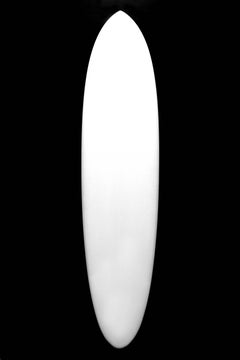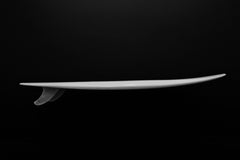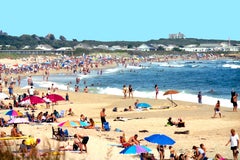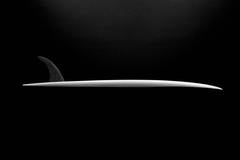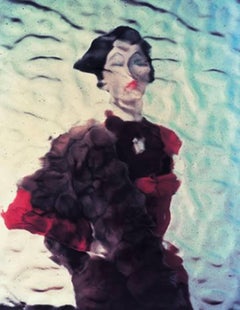Art by Medium: Dye Transfer
to
9
65
39
70
55
201
Overall Width
to
Overall Height
to
74
358
1
7
2
15
18
21
2
147
139
18
7
5
1
1
1
200
123
92
100
61
53
44
38
36
31
30
25
25
22
21
21
20
17
17
15
14
13
12
432
182,839
96,587
78,124
77,218
114
27
22
19
17
225
43
412
18
Medium: Dye Transfer
Archie's ghost board
Located in Fairfield, CT
Andrew Blauschild is an artist who began photographing the New York surf, seascape and art cultures in the late 80s accumulating one of the richest archives of New York's underground...
Category
21st Century and Contemporary Photorealist Art by Medium: Dye Transfer
Materials
Dye Transfer
Price Upon Request
Twin fin ghost board
Located in Fairfield, CT
Andrew Blauschild is an artist who began photographing the New York surf, seascape and art cultures in the late 80s accumulating one of the richest archives of New York's underground...
Category
21st Century and Contemporary Photorealist Art by Medium: Dye Transfer
Materials
Dye Transfer
Price Upon Request
Under the boardwalk
Located in Fairfield, CT
Andrew Blauschild is an artist who began photographing the New York surf, seascape and art cultures in the late 80s accumulating one of the richest archives of New York's underground...
Category
21st Century and Contemporary Photorealist Art by Medium: Dye Transfer
Materials
Dye Transfer
Price Upon Request
Poles
Located in Fairfield, CT
Andrew Blauschild is an artist who began photographing the New York surf, seascape and art cultures in the late 80s accumulating one of the richest archives of New York's underground...
Category
21st Century and Contemporary Photorealist Art by Medium: Dye Transfer
Materials
Dye Transfer
Price Upon Request
Kimura (ghost board)
Located in Fairfield, CT
Andrew Blauschild is an artist who began photographing the New York surf, seascape and art cultures in the late 80s accumulating one of the richest archives of New York's underground...
Category
21st Century and Contemporary Art by Medium: Dye Transfer
Materials
Dye Transfer
Price Upon Request
Water Effect, Cover Study, New York, c. 1952
Located in New York, NY
Water Effect, Cover Study, New York, c. 1952
Category
1950s Art by Medium: Dye Transfer
Materials
Dye Transfer
Price Upon Request
Distorted Nude, New York, 1950's
Located in New York, NY
Distorted Nude, New York, 1950's
Category
1950s Art by Medium: Dye Transfer
Materials
Dye Transfer
Price Upon Request
Line on Face, New York, between 1947 and 1949
Located in New York, NY
Line on Face, New York, between 1947 and 1949
Category
1940s Art by Medium: Dye Transfer
Materials
Dye Transfer
Lisette behind fluted glass, New York, around 1943
Located in New York, NY
Lisette behind fluted glass, New York, around 1943
Category
1940s Art by Medium: Dye Transfer
Materials
Dye Transfer
Price Upon Request
Study for an Advertising Photograph, New York, 1948
Located in New York, NY
Study for an Advertising Photograph, New York, 1948
Category
1940s Art by Medium: Dye Transfer
Materials
Dye Transfer
Model and Mannequin, Cover Study, New York, 1945
Located in New York, NY
Model and Mannequin, Cover Study, New York, 1945
Category
1940s Art by Medium: Dye Transfer
Materials
Dye Transfer
Price Upon Request
Spinning Flag
Located in New York, NY
Spinning Flag, 2014
Dye-infused aluminum photograph
72 × 47 in (152.4 × 101.6 cm)
Edition of 15
Category
21st Century and Contemporary Contemporary Art by Medium: Dye Transfer
Materials
Dye Transfer
Price Upon Request
Dye Transfer art for sale on 1stDibs.
Find a wide variety of authentic Dye Transfer art available on 1stDibs. While artists have worked in this medium across a range of time periods, art made with this material during the 21st Century is especially popular. If you’re looking to add art created with this material to introduce a provocative pop of color and texture to an otherwise neutral space in your home, the works available on 1stDibs include elements of blue, purple, red, orange and other colors. There are many well-known artists whose body of work includes ceramic sculptures. Popular artists on 1stDibs associated with pieces like this include Topher Straus, Mark S. Kornbluth, Orlando Azevedo, and Txema Yeste. Frequently made by artists working in the Abstract, Contemporary, all of these pieces for sale are unique and many will draw the attention of guests in your home. Not every interior allows for large Dye Transfer art, so small editions measuring 0.01 inches across are also available
